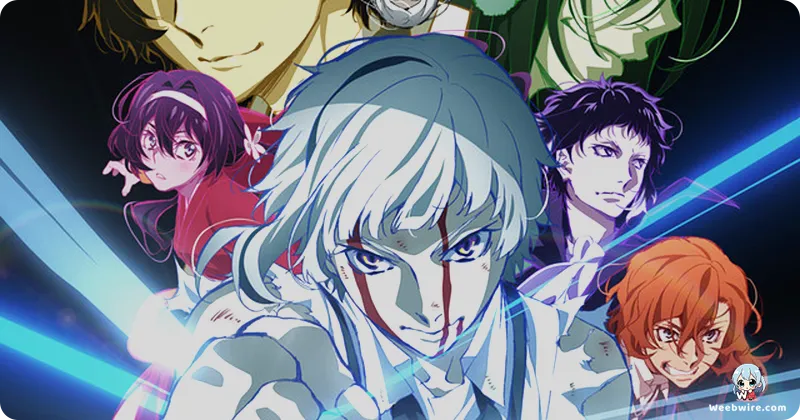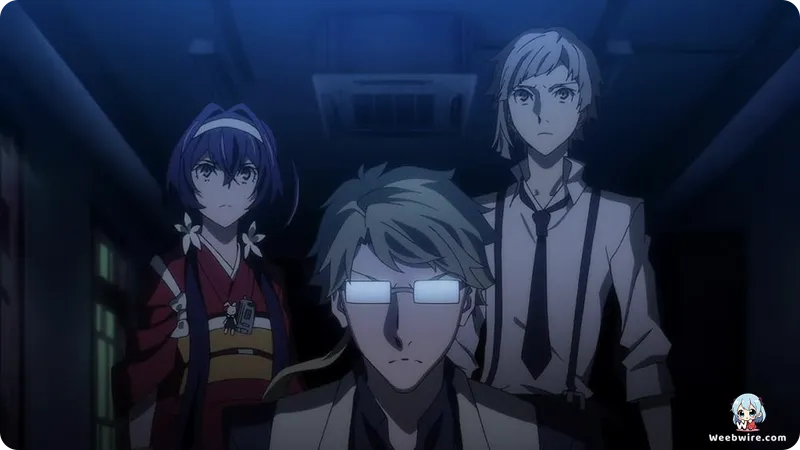Bungo Stray Dogs: DEAD APPLE: An Inside Look at the Film's Original Story and Canon Significance

As a seasoned editor in the anime world, I've seen countless films that serve as mere diversions from their source material. However, Bungo Stray Dogs: DEAD APPLE stands as a remarkable exception. This cinematic achievement is not just an enjoyable watch; it is a crucial, canon-enriching chapter within the celebrated Bungo Stray Dogs universe. Unlike many anime films, DEAD APPLE boasts an entirely original story, meticulously penned by Kafka Asagiri, the visionary author behind the original light novel and manga. This direct involvement from Asagiri ensures the film's events are not mere filler but integral to the saga, offering a deeply personal exploration of characters and their formidable powers, while preserving the source material's thematic depth.
The film's ingenious core premise introduces a mysterious fog that causes ability users' powers to manifest as separate, sentient entities. This phenomenon, dubbed "Special Ability: All Men Are Equal," is a brilliant narrative device. It compels protagonists like Atsushi Nakajima and Ryunosuke Akutagawa to confront the very essence of their gifts, visually personifying their struggles and strengths. This unique perspective on supernatural abilities elevates the narrative beyond typical battle shonen tropes, pushing the story into a more psychological and philosophical realm. It presents a fresh and compelling challenge to both the Armed Detective Agency and the Port Mafia.

DEAD APPLE also marked the highly anticipated, full animated debut of Fyodor Dostoevsky, a pivotal and enigmatic antagonist. His chilling introduction dramatically escalated the stakes, providing audiences a crucial early understanding of his cunning intellect and pervasive malevolence. This effectively bridges his character development into subsequent television seasons. This strategic early showcase solidifies the movie's role as a vital link in the broader Bungo Stray Dogs narrative.
Studio Bones, celebrated for its fluid animation, truly excelled with DEAD APPLE. The visual spectacle of separated abilities clashing, especially Atsushi's Beast Beneath the Moonlight and Akutagawa's Rashomon battling their own manifestations, is a testament to their mastery. The fight choreography is both visually stunning and emotionally resonant, mirroring internal conflicts. Director Takuya Igarashi maintained a consistent visual style and pacing, ensuring the film felt like a seamless extension of the beloved anime series.
Beyond the thrilling action, DEAD APPLE is rich in thematic explorations. It delves into profound questions of identity, the inherent burden of extraordinary power, and the nature of humanity, offering a contemplative experience. The film also features delightful, often forced, character pairings, notably between rivals Atsushi and Akutagawa. Their begrudging cooperation showcases their evolving dynamic in a compelling way. Complementing this, Taku Iwasaki's masterful original score enhances every scene, imbuing it with heightened drama and emotional reflection, making the soundtrack a significant contributor to the movie's overall impact. In essence, DEAD APPLE is a meticulously crafted expansion, offering a unique blend of thrilling action, intricate mystery, and profound character development.
Credits
Bungo Stray Dogs: DEAD APPLE
Author
Kafka Asagiri
Cover Art
Sango Harukawa
Studio
Bones
Publisher
Kadokawa
Producers





